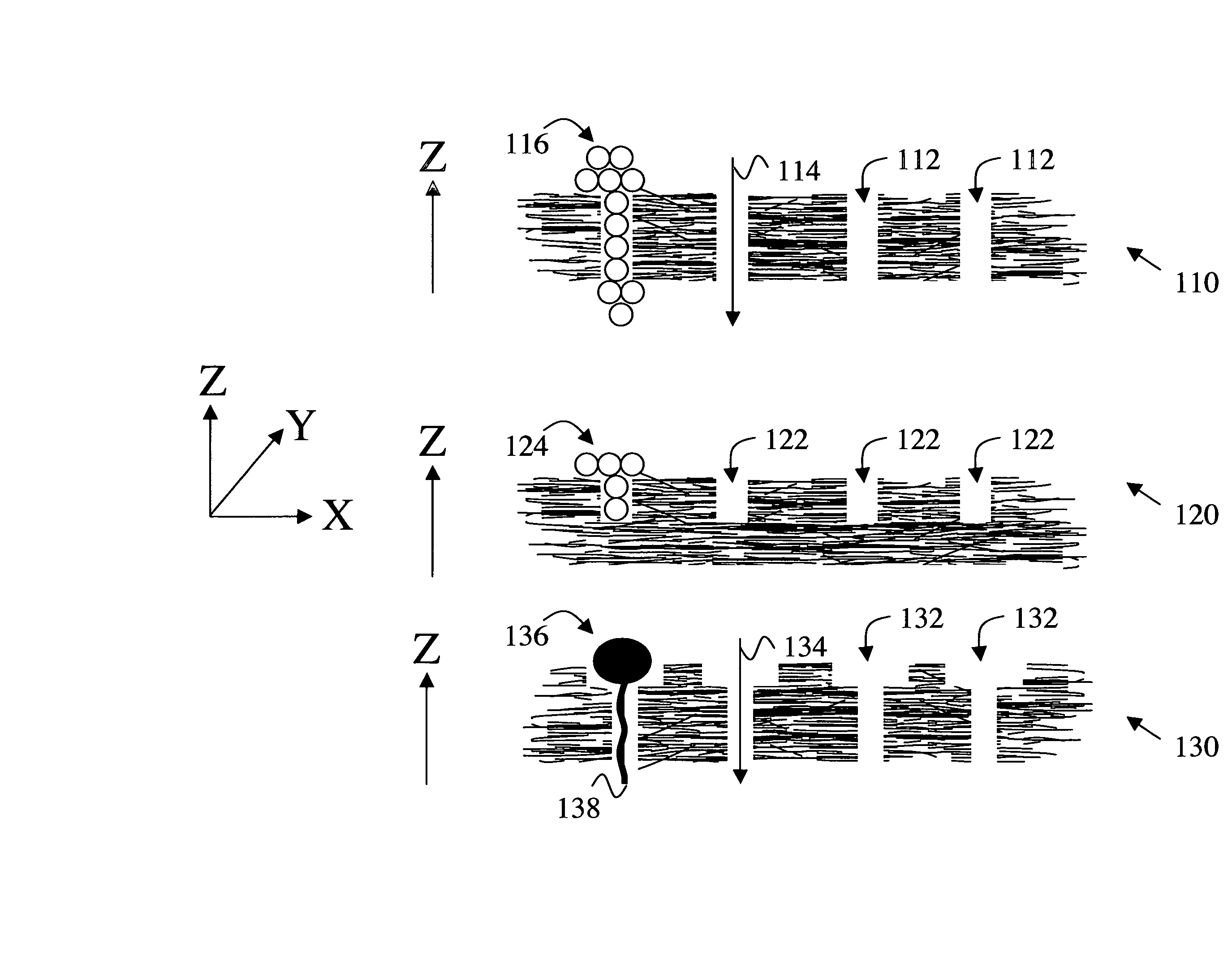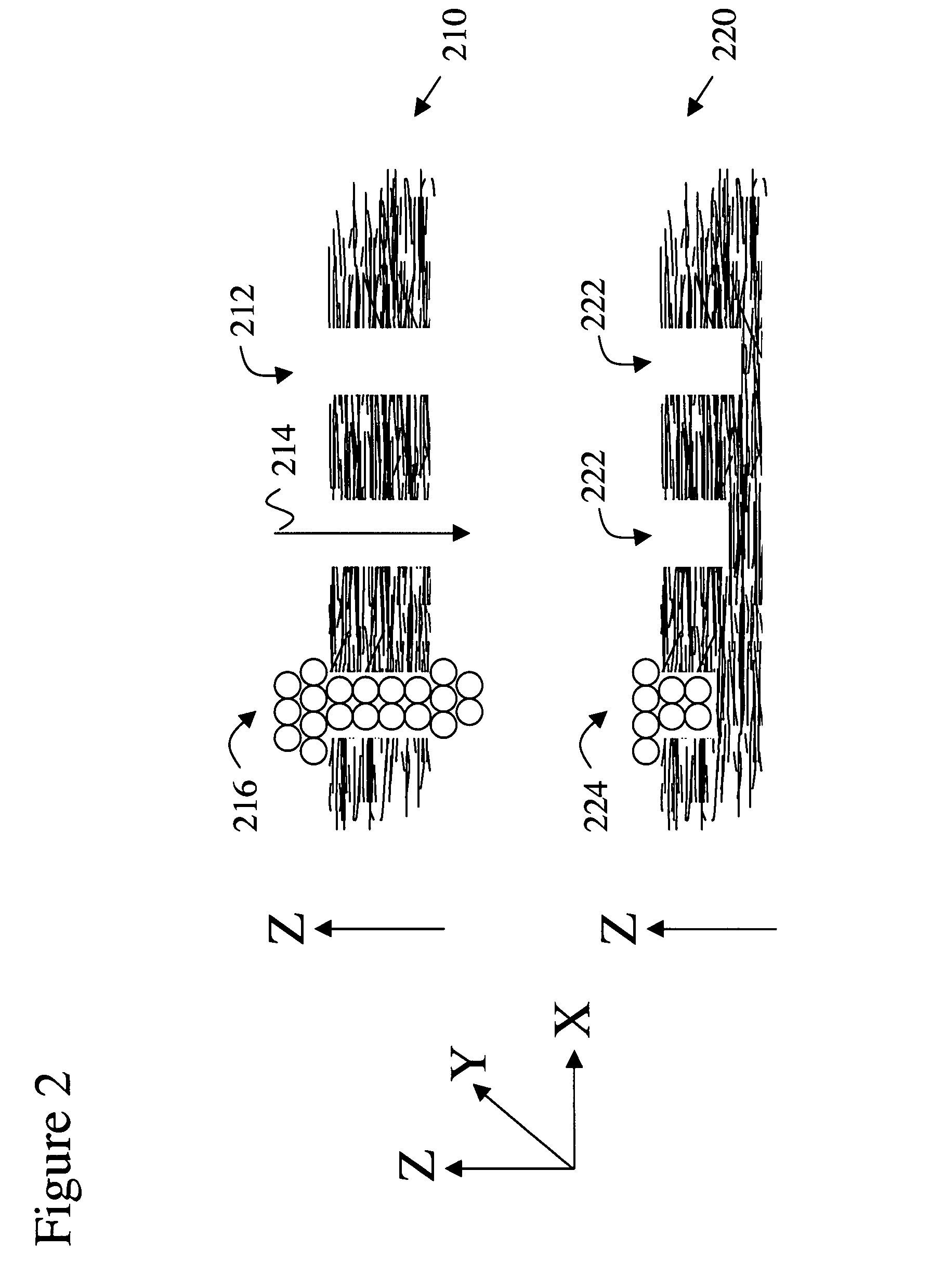Nanotube mat with an array of conduits for biological cells
a technology of nanotubes and conduits, applied in the field of nanotube mats, can solve the problems of mechanical fragility, hydrogels such as matrigel (a collagen sol/gel) and hydrogel membranes such as matrigel may not be suitable for use as laminas
- Summary
- Abstract
- Description
- Claims
- Application Information
AI Technical Summary
Benefits of technology
Problems solved by technology
Method used
Image
Examples
Embodiment Construction
[0020] Although the following detailed description contains many specifics for the purposes of illustration, anyone of ordinary skill in the art will readily appreciate that many variations and alterations to the following exemplary details are within the scope of the invention. Accordingly, the following preferred embodiment of the invention is set forth without any loss of generality to, and without imposing limitations upon, the claimed invention.
[0021] The present invention provides a nanotube mat with an array of conduits. In one aspect, the device is a nanotube mat to support or host biological cells, neural cells, neurites or axons. In another aspect, the device is a nanotube mat to direct growth of biological cells, neural cells, neurites or axons. In yet another aspect, the device is a nanotube mat capable of organizing or selecting biological cells, neural cells, neurites or axons. In still another aspect, the device is a nanotube mat capable of interfacing biological cel...
PUM
| Property | Measurement | Unit |
|---|---|---|
| height | aaaaa | aaaaa |
| thick | aaaaa | aaaaa |
| thick | aaaaa | aaaaa |
Abstract
Description
Claims
Application Information
 Login to View More
Login to View More - R&D
- Intellectual Property
- Life Sciences
- Materials
- Tech Scout
- Unparalleled Data Quality
- Higher Quality Content
- 60% Fewer Hallucinations
Browse by: Latest US Patents, China's latest patents, Technical Efficacy Thesaurus, Application Domain, Technology Topic, Popular Technical Reports.
© 2025 PatSnap. All rights reserved.Legal|Privacy policy|Modern Slavery Act Transparency Statement|Sitemap|About US| Contact US: help@patsnap.com



